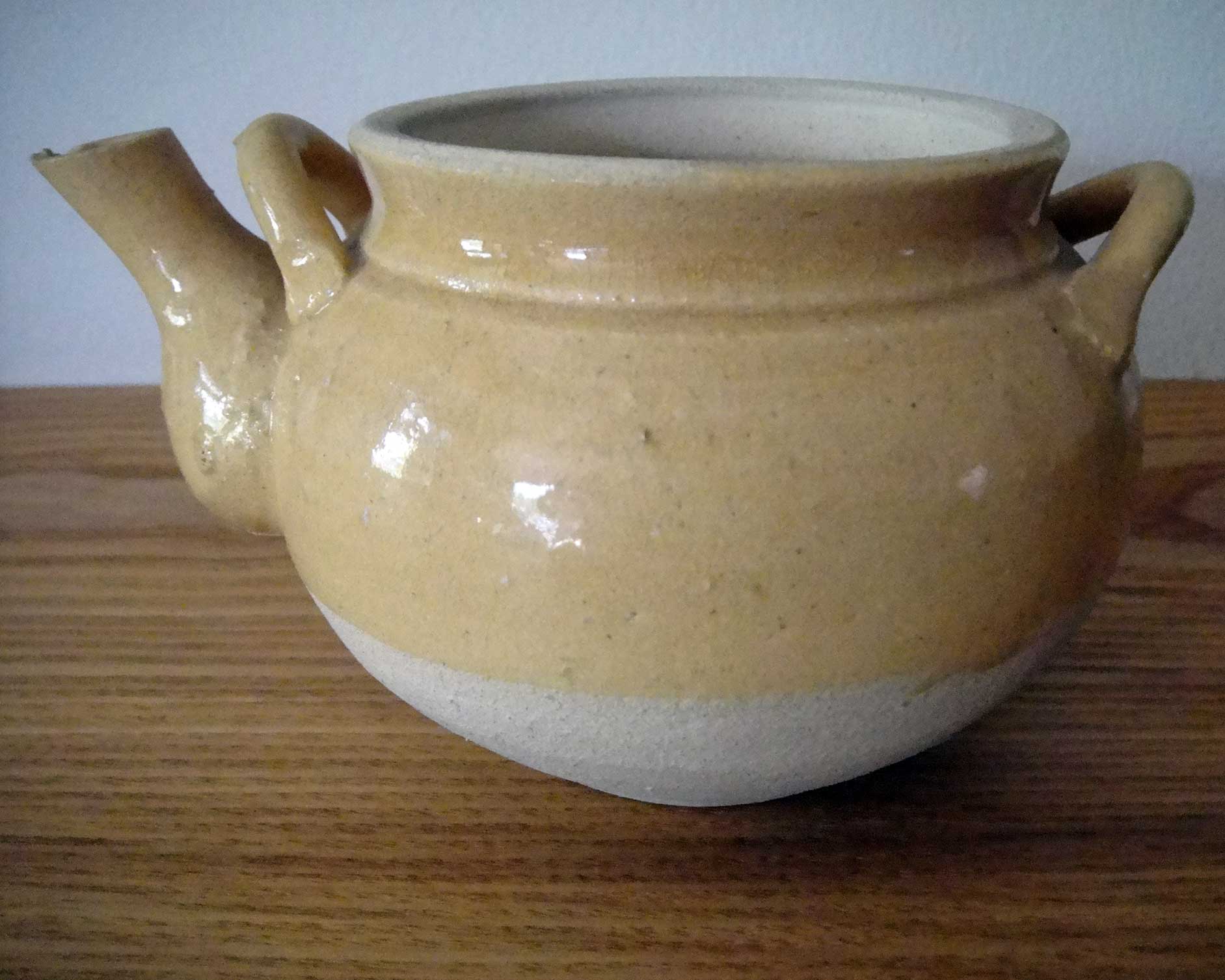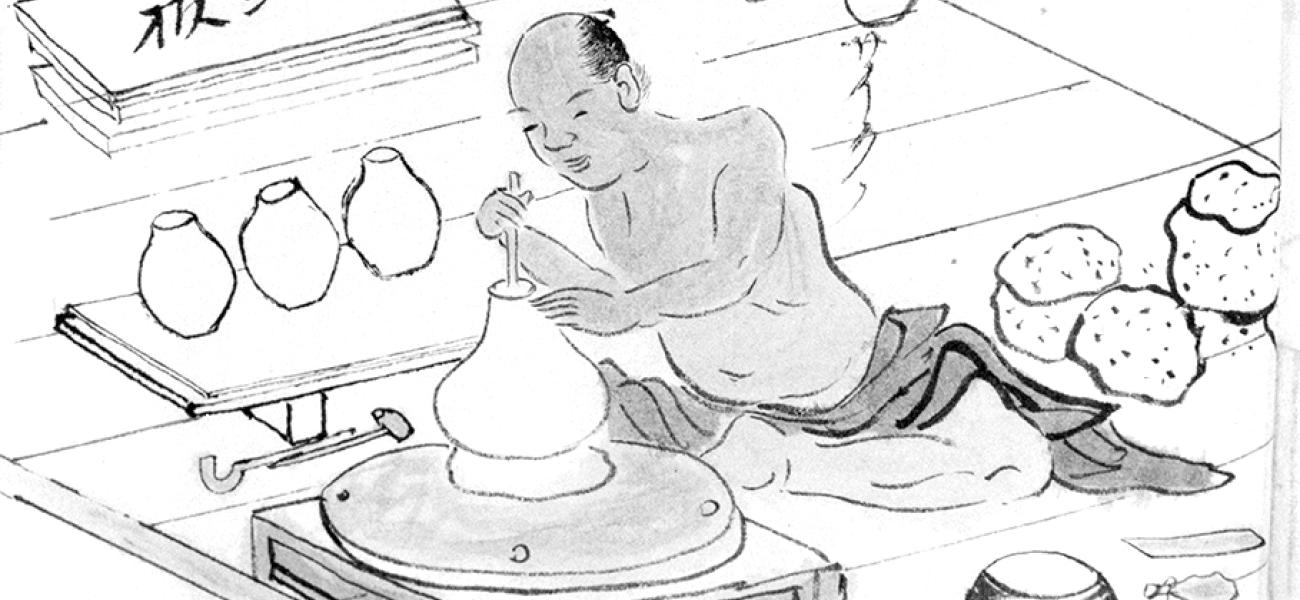 In the summer of 1973, I was taking a walk with two young women who were apprentices at workshops in the pottery-filled town of Shigaraki, Japan, when we came across a small shed by the side of the road. The shed was built in the old way, using clay daub over a woven bamboo framework, with a thatched roof, but the roof had sagged, and the walls were so dilapidated that we could see into the interior. Dusty bundles of ceramics lay on the ground. The straw rope that had bound them together had rotted, leaving neat stacks of pots in place. They were small teapots, of the plainest possible sort. Just sandy, off-white clay spheres dipped halfway down in clear glaze that had fired to a golden tone. Two loops in front and back of the wide mouth of each pot, aligned with the stubby spout, were ready to receive a bail handle. If clay lids had been made, we did not find them.
In the summer of 1973, I was taking a walk with two young women who were apprentices at workshops in the pottery-filled town of Shigaraki, Japan, when we came across a small shed by the side of the road. The shed was built in the old way, using clay daub over a woven bamboo framework, with a thatched roof, but the roof had sagged, and the walls were so dilapidated that we could see into the interior. Dusty bundles of ceramics lay on the ground. The straw rope that had bound them together had rotted, leaving neat stacks of pots in place. They were small teapots, of the plainest possible sort. Just sandy, off-white clay spheres dipped halfway down in clear glaze that had fired to a golden tone. Two loops in front and back of the wide mouth of each pot, aligned with the stubby spout, were ready to receive a bail handle. If clay lids had been made, we did not find them.
These were “train teapots” (kisha dobin), one of the town’s mainstay products from the late nineteenth century to mid-twentieth century. Vendors sold them from trays on station platforms. As a train pulled in, travelers reached out the open windows and exchanged a few coins for a pot of hot green tea. (The tea was the subject of the transaction; the pot simply conveyed it.) Although we three recognized what these pots were, none of us had ever bought one during a train ride. By the 1970s, molded plastic containers had replaced clay ones. Awed that the shed and its contents still stood undisturbed, we respectfully took away one teapot each.
Dining on the Train


